Guadeloupe’s original name was Karukera, meaning land of beautiful waters, and it still is just that. Beautiful waters with beaches in a kaleidoscope of colours. There are over 200 beaches across the islands of Guadeloupe, and all of them are public. This French archipelago has a curious array of shores: Lively white sand beaches of Grande Terre; A dramatic mix of dark, wild volcanic sands to gorgeous golden grains in Basse Terre; Untouched, secluded blonde bays with tiny offshore islets in Marie Galante and Les Saints. Here are our top 10 favourite sandy playgrounds on Butterfly Island.
Top 10 beaches in Guadeloupe
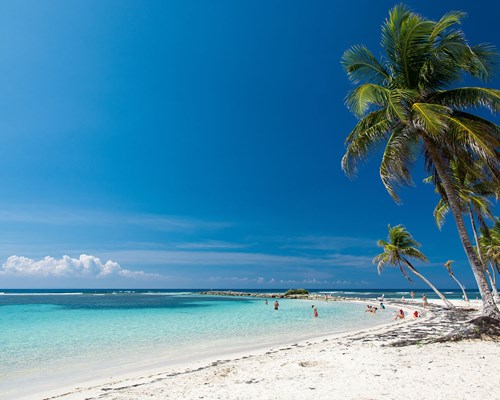
1. Plage de la Caravelle, Grande Terre
Textbook Caribbean perfection: white sand, shallow, clear waters and coconut trees. Home to Club Med. In a protective cove, calm waters on one side, more wind on the other for sailors and windsurfers.
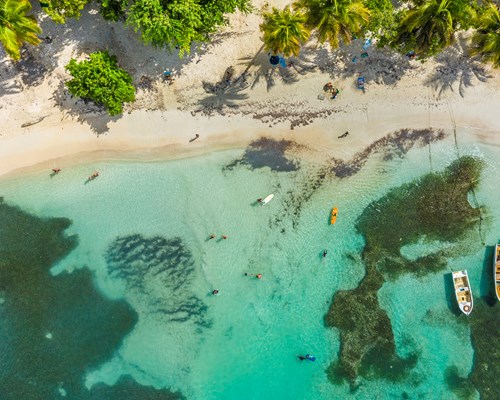
2. Plage de Petit Havre, Grande Terre
Actually two beaches – one to the left, which is nice and sheltered for swimmers and the other to the right, near the fishing port. Both have beautifully white sand and the surf conditions (forgiving left handers) make it a top spot for bodyboarders or beginner surfers.
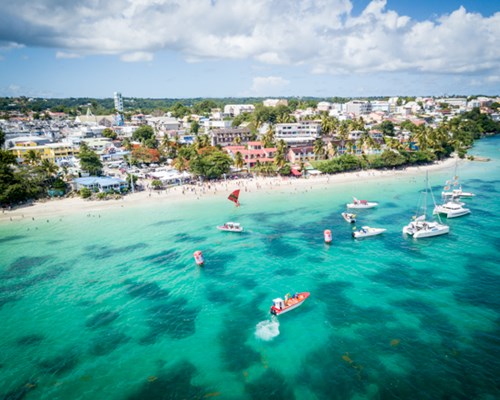
3. Plage de la Datcha, Grande Terre
A popular beach for locals and tourists, and it’s easy to see why: a long stretch of light sand, clear waters and calm waves. Hog a spot of shade under a palm tree, buy a Sorbet coco and enjoy the view out to Gosier islet, which you can swim, kayak or get a boat ride out to.

4. Plage les Salines, Grande Terre
Pointe des Chateaux, an area of incredible natural beauty. And this beach is no exception – white sands, choppy sea and a view out to La Desirade. Waves and strong currents make this a non-swimming beach, but there are some terrific rockpools to explore.

5. Plage de Bois Jolan, Grande Terre
Warm, shallow water lapping against pale sand – perfect for kids who can paddle to their hearts content. Good for windsurfing and kitesurfing too. Wear swim shoes to avoid sea urchins. Coconut trees providing shade. We love it here in the evenings, when you can swim as the sun sets.

6. Plage de Grande Anse, Basse Terre
Thought to be one of the best beaches in Guadeloupe, and the biggest too at over a kilometre long. Grande Anse’s bright golden sands, palm trees and hilly backdrop - not to mention its reputation for incredible sunsets - make it a must-visit beach if you’re in the area.

7. Plagne de la Perle, Basse Terre
In Deshaies, on one side of Plage de l’Anse Rifflet, Anse la Perle played home to the Detective Inspector’s beach house in the TV series Death in Paradise. It’s a lovely long stretch of golden sand (perfect for beach walks), dotted with beach restaurants run by local families. A coral reef protects the waters – the waves can pick up a bit near the shore (great for watersports) though it’s calmer further out for swimmers. Trees provide shade on the sand, while mountains and mangroves make up the surroundings.
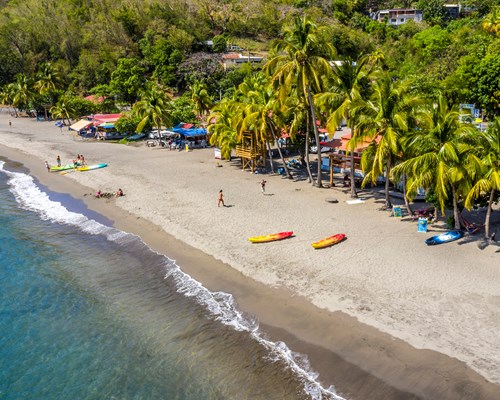
8. Plagne de Malendure, Basse Terre
Not all Caribbean beaches have white-gold sands, and Malendure is a case in point. Here the sands are a volcanic black sand, looking out to the Pigeon islands. Excellent for snorkelers and divers, the waters are fabulously clear – and you also have the incredible islets to explore.
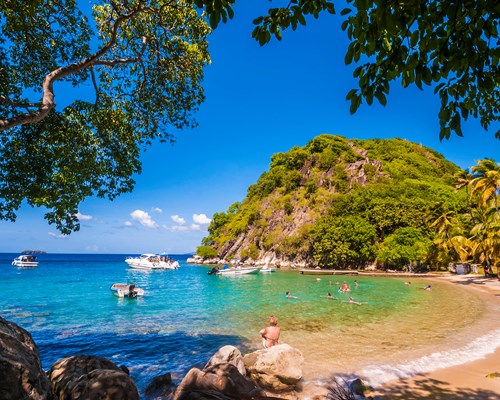
9. Plage du Pain de Sucre, Les Saintes
Sugarloaf Beach takes its name from the iconic mountain in Rio – here things are scaled down when it comes to altitude and crowds, and we love it. The clear blue-green waters are fabulous to snorkel in (especially around the base of the mountain) - and the small bay, dotted with coconut trees, looks out to fishing boats and the rugged green mound. 45 minutes from the town, the steep path (near Chameau junction) down to the beach makes it a little more difficult to reach, but that just adds to the gloriously secluded feel of it, and some boats provide access if you’d prefer. There’s another beach – Anse Devant - on the other side of the mountain, facing the bay.

10. Plage de Vieux Fort, Marie Galante
A secluded stretch of white sand on the north western edge of the island above Saint-Louis. Palm trees and bushes hide the road behind, while ahead you’re looking out to a tiddly islet and forest-covered headland. Picnic areas make this a super place to stop for lunch and you can explore the mangroves on kayak – look out for turtles! It’s also called ‘massacre beach’ because the settlers who arrived here in 1648 were violently killed by the Caribs.



